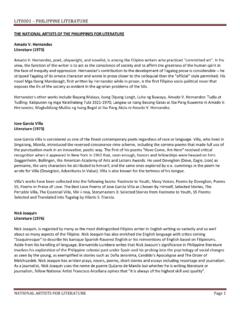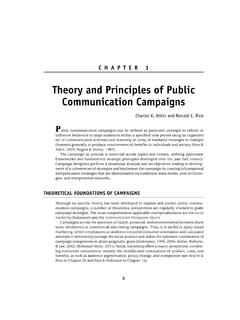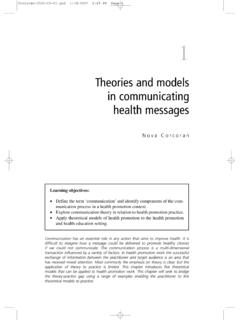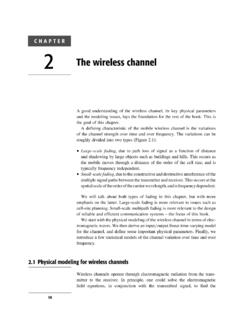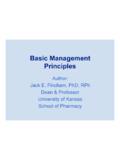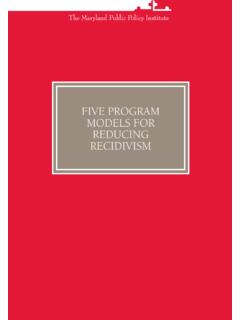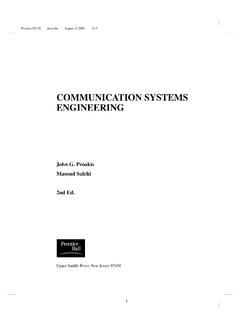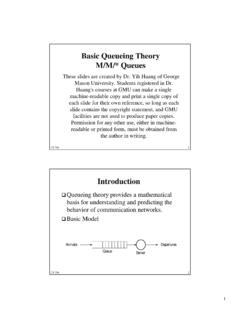Transcription of MODELS OF COMMUNICATION - jacs...
1 ENG001 COMMUNICATION ARTS 1 MODELS OF COMMUNICATION Page 1 ARISTOTLE S model OF COMMUNICATION : Aristotle, a great philosopher initiated the earliest mass COMMUNICATION model . He proposed the model before 300 and found the importance of audience role in the COMMUNICATION chain. This model is more focused on public speaking than interpersonal COMMUNICATION . Aristotle model of COMMUNICATION is formed with 5 basic elements (i) Speaker, (ii) Speech, (iii) Occasion, (iv) Audience and (v) Effect. Aristotle advises speakers to build speech for different audience on different time (occasion) and for different effects. Speaker plays an important role in Public speaking. The speaker must prepare his speech and analysis audience needs before he enters into the stage.
2 His words should influence in audience mind and persuade their thoughts towards him. Example: Alexander gave brave speech to his soldiers in the war field to defeat Persian Empire. Speaker Alexander Speech about his invasion Occasion War field Audience Soldiers Effect To defeat Persia LASSWELL S model OF COMMUNICATION Harold Dwight Lasswell, the American political scientist states that a convenient way to describe an act of COMMUNICATION is to answer the following questions Who Says What In Which Channel To Whom With what effect? ENG001 COMMUNICATION ARTS 1 MODELS OF COMMUNICATION Page 2 This model is about process of COMMUNICATION and its function to society, According to Lasswell there are three functions for COMMUNICATION : 1.
3 Surveillance of the environment 2. Correlation of components of society 3. Cultural transmission between generation Lasswell model suggests the message flow in a multicultural society with multiple audiences. The flow of message is through various channels. And also this COMMUNICATION model is similar to Aristotle s COMMUNICATION model . In this model , the COMMUNICATION component who refers the research area called Control Analysis , Says what is refers to Content Analysis , In which channel is refers to Media Analysis , To Whom is refers to Audience Analysis With What Effect is refers to Effect Analysis Example: CNN NEWS A water leak from Japan s tsunami-crippled nuclear power station resulted in about 100 times the permitted level of radioactive material flowing into the sea, operator Tokyo Electric Power Co said on Saturday.
4 Who TEPC Operator What Radioactive material flowing into sea Channel CNN NEWS (Television medium) Whom Public Effect Alert the people of japan from the radiation. Advantage of Lasswell model : It is Easy and Simple It suits for almost all types of COMMUNICATION The concept of effect Disadvantage of Lasswell model : Feedback not mentioned Noise not mentioned Linear model ENG001 COMMUNICATION ARTS 1 MODELS OF COMMUNICATION Page 3 SHANNON AND WEAVER model OF COMMUNICATION In 1948, Shannon was an American mathematician, Electronic engineer and Weaver was an American scientist both of them join together to write an article in Bell System Technical Journal called A Mathematical Theory of COMMUNICATION and also called as Shannon-Weaver model of COMMUNICATION .
5 This model is specially designed to develop the effective COMMUNICATION between sender and receiver. Also they find factors which affecting the COMMUNICATION process called Noise . At first the model was developed to improve the Technical COMMUNICATION . Later it s widely applied in the field of COMMUNICATION . The model deals with various concepts like Information source, transmitter, Noise, channel, message, receiver, channel, information destination, encode and decode. Sender : The originator of message or the information source selects desire message Encoder : The transmitter which converts the message into signals Note: The sender s messages converted into signals like waves or Binary data which is compactable to transmit the messages through cables or satellites.
6 For example: In telephone the voice is converted into wave signals and it transmits through cables Decoder : The reception place of the signal which converts signals into message. A reverse process of encode Note : The receiver converts those binary data or waves into message which is comfortable and understandable for receiver. Otherwise receiver can t receive the exact message and it will affect the effective COMMUNICATION between sender and receiver Receiver : The destination of the message from sender Note : Based on the decoded message the receiver gives their feed back to sender. If the message distracted by noise it will affect the COMMUNICATION flow between sender and receiver Noise: The messages are transferred from encoder to decoder through channel.
7 During this process the messages may distracted or affected by physical noise like horn sounds, thunder and crowd noise or encoded signals may distract in the channel during the transmission process which affect the COMMUNICATION flow or the receiver may not receive the correct message Note : The model is clearly deals with external noises only which affect the messages or signals from external sources. For example: If there is any problems occur in network which directly affect the mobile phone COMMUNICATION or distract the messages ENG001 COMMUNICATION ARTS 1 MODELS OF COMMUNICATION Page 4 Example: Thomson made call to his assistant come here I want to see you . During his call, noise appeared (transmission error) and his assistant received I want only.
8 Again Assistant asked Thomson (feedback) what do you want Thomson . Sender : Thomson Encoder : Telephone (Thomson) Channel : Cable Noise : Distraction in voice Reception : Telephone (Assistant) Receiver : Assistant. Due to transmission error or noise, Assistant can t able to understand Thomson s messages. *The noise which affect the COMMUNICATION flow between them. Criticism of Shannon-Weaver model of COMMUNICATION : 1. One of the simplest model and its general applied in various COMMUNICATION theories 2. The model which attracts both academics of Human COMMUNICATION and Information theorist to leads their further research in COMMUNICATION 3. It s more effective in person-to-person COMMUNICATION than group or mass audience 4.
9 The model based on Sender and Receiver . Here sender plays the primary role and receiver plays the secondary role (receive the information or passive) 5. COMMUNICATION is not a one way process. If it s behaved like that, it will lose its strength. For example: Audience or receiver who listening a radio, reading the books or watching television is a one way COMMUNICATION because absence of feedback 6. Understanding Noise will helps to solve the various problems in COMMUNICATION OSGOOD- SCHRAMM model OF COMMUNICATION It is a Circular model , so that COMMUNICATION is something circular in nature ENG001 COMMUNICATION ARTS 1 MODELS OF COMMUNICATION Page 5 Encoder Who does encoding or Sends the message (message originates) Decoder Who receives the message Interpreter Person trying to understand (analyses, perceive) or interpret Note: From the message starting to ending, there is an interpretation goes on.
10 Based on this interpretation only the message is received. This model breaks the sender and receiver model it seems COMMUNICATION in a practical way. It is not a traditional model . It can happen within our self or two people; each person acts as both sender and receiver and hence use interpretation. It is simultaneously take place encoding, interpret and decoding. Semantic noise is a concept introduced here it occurs when sender and receiver apply different meaning to the same message. It happens mostly because of words and phrases for Technical Language, So certain words and phrases will cause you to deviate from the actual meaning of the COMMUNICATION . Note: When semantic noise takes place decoding and interpretation becomes difficult and people get deviated from the actual message.
